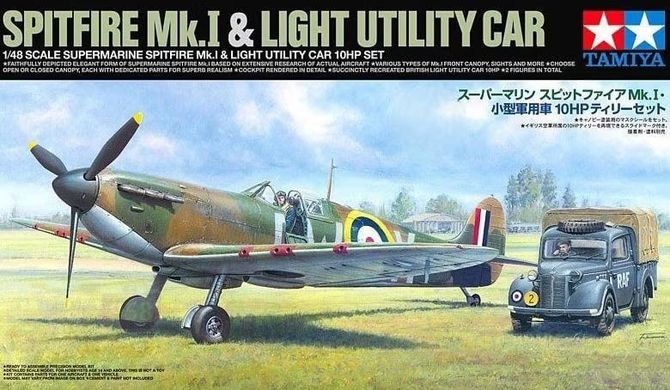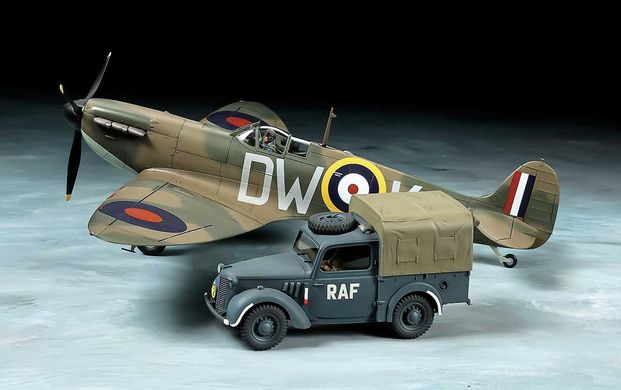The Supermarine Spitfire is perhaps the most famous British fighter aircraft of the Second World War. It was an all-metal machine with a low-slung wing, characteristic elliptical wings, a classic tail and a retractable undercarriage. The flight of the prototype took place on March 5, 1936. The Spitfire proved to be the Royal Air Force's mainstay in the war, continuing to perform well after the war, remaining in production for 10 years. The history of the Spitfire began at the drawing table of RJ Mitchell, Supermarine's chief designer. The first machines arrived in RAF units in 1938, but when the Battle of Britain began in the summer of 1940, there were already 19 squadrons of modern fighters on the airfields - together with the slightly older "Hurricane of the Islands", 600 aircraft were defending. As the war expanded, the Spitfire saw service wherever the Royal Air Force was active in the Far East, North Africa and Italy, during the Normandy landings and combat in France, and finally during operations in Germany in 1945. For many British people, it became a symbol of victory in the Second World War. This wonderful car has at least a dozen serial versions. The most important of these are, among others, the first mass-produced Spitfire Mk.I with a 1030 hp Rolls-Royce Merlin II engine. Above all, this machine made such a wonderful contribution to the Battle of Britain. Many versions of this model were developed, including the PR Mk IA (Reconnaissance Version) or PR.IG (Armed Reconnaissance Version). Another interesting version was the Spitfire Mk.V with a Rolls-Royce Merlin 45 engine with a capacity of 1440 horsepower. Later, Merlin 50 engines began to be assembled. Serial production of this version began in 1941 and was the Air Force's response to the appearance of the Messerschmitt Bf-109F. Another very successful version is the Spitfire Mk.IX, equipped with a Merlin 61 engine with a 4-blade propeller. It was created as a rival to the Focke-Wulf Fw-190 and was put into production at the end of 1941. This version was modified many times and, for example, in 1944 it received a new gyroscopic sight, an enlarged steering wheel or a different wing system. Another major version is the Spitfire Mk.XIV with a Rolls-Royce Griffon 61 engine and a five-blade propeller. Serial production began in October 1943. One of the last series was the Mk.21 version released. This version had a Griffon 61 engine, heavily reinforced structure and skin, the wings were lengthened, which increased their flying surface. The Light Utility Car, commonly known as the Tilly, was a British light utility vehicle of the Second World War. The Tilly was a car created from a combination of two basic elements. The body of this car was designed by Austin and was created as a result of combining a two-seater interior with - most often - a cargo compartment covered with a tarpaulin. This body, in turn, was built on various types of car chassis. However, these were always passenger car chassis that had already been produced on a relatively large scale, such as the Austin 10 GRQ, Hillman Minx or Standard Flying 14. Placing a Tilly on a particular chassis also meant giving it another name, such as the Austin 8 HP, Austin 10 HP or Morris 10 HP. Cars of this type, although cheap and easy to manufacture, proved very useful and remained in service into the 1950s.
















